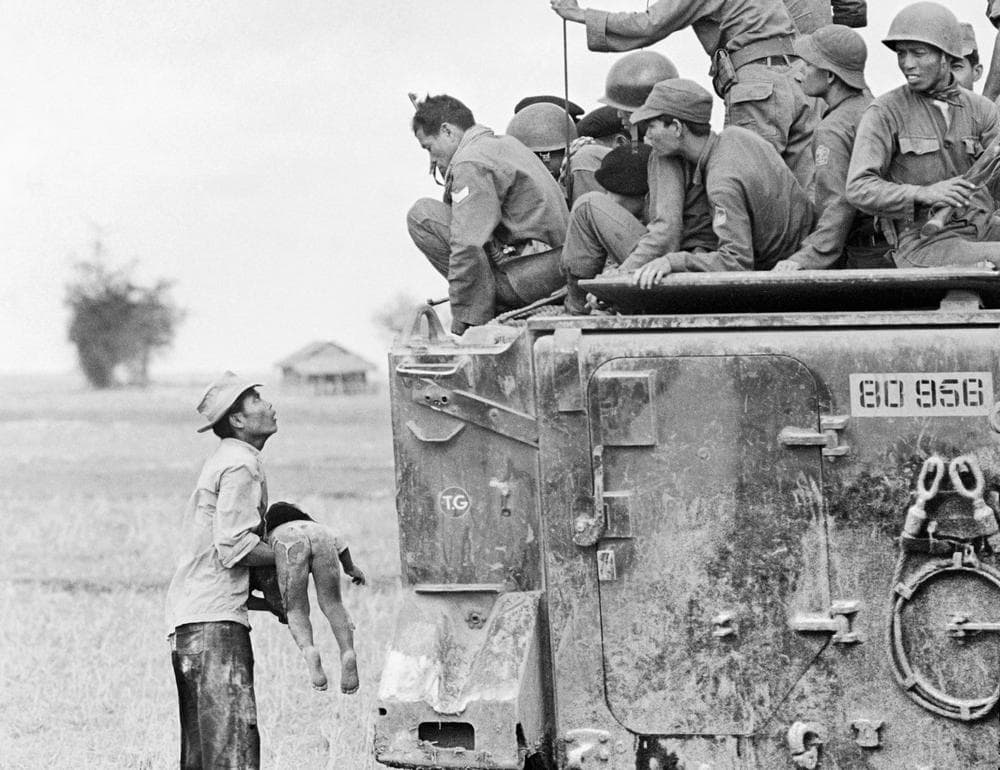Advertisement
Remembering Vietnam Through Photographs
ResumeMany of the iconic images from the Vietnam War were pictures taken by AP photographers: A monk setting himself on fire in a city square; a general, his arm outstretched, about to shoot a man; a little girl, naked and crying, her clothing burned off by napalm.
Some of these images are as familiar to many Americans as their own family photo albums. Now these photos are collected in a book called "Vietnam: The Real War: A Photographic History by the Associated Press."
Santiago Lyon, director of photography for the Associated Press, joins Here & Now's Robin Young to discuss the images. To see 11 images from the book, see the slideshow above.
Interview Highlights: Santiago Lyon
On photographer Horst Fass's work in Vietnam

“When we look at his work, I think the picture that you mentioned in the introduction that stands out to me, is the image of the South Vietnamese farmer holding up his dead child to an armored personnel carrier full of South Vietnamese troops. It’s just a heartbreaking image that sort of reflects the futility that people often feel in a war, where they feel absolutely helpless and overwhelmed by circumstances and violence beyond their control.”
On the Buddhist monk photo by Malcolm Browne
“Malcolm was a correspondent, so his specialty was the written word. But like many correspondents in that day, they were given cameras and encouraged to make photographs, so they were doing cross-format journalism 40 years ago. The particular image in question of the monk sitting there, with a grimace of sorts on his face as he’s engulfed in flames, that image really resonated because it was so dramatic. And it’s said that President Kennedy remarked to his ambassador at the time, having seen the picture, “We’re going to have to do something about that regime.” So it’s an example of photojournalism reaching into the halls of power, and through its power, having an effect on all the seen events.”
On whether or not the photographer intervenes
“It’s always a difficult dynamic for a photographer in the field when faced with such dramatic scenes and circumstances. At what point do you put the camera down and intercede, or do you conversely maintain your journalistic objectivity and keep making pictures? And I think, as in the case of Nick Ut, who made the picture of the napalm-covered girl running down the road — after he saw that she was in terrific pain because of the injuries she had, he made sure that she got to the hospital by taking her in his own car and made sure that she was looked after and survived. And she’s still alive and lives in Canada and does activism work around peace, the end of warfare and all that, and she and Nick are still close friends. So I think at some point, the photographer reverts to their original condition of compassionate human being.”
Guest
- Santiago Lyon, director of photography for the Associated Press. He tweets @slyon66.
This segment aired on November 11, 2013.